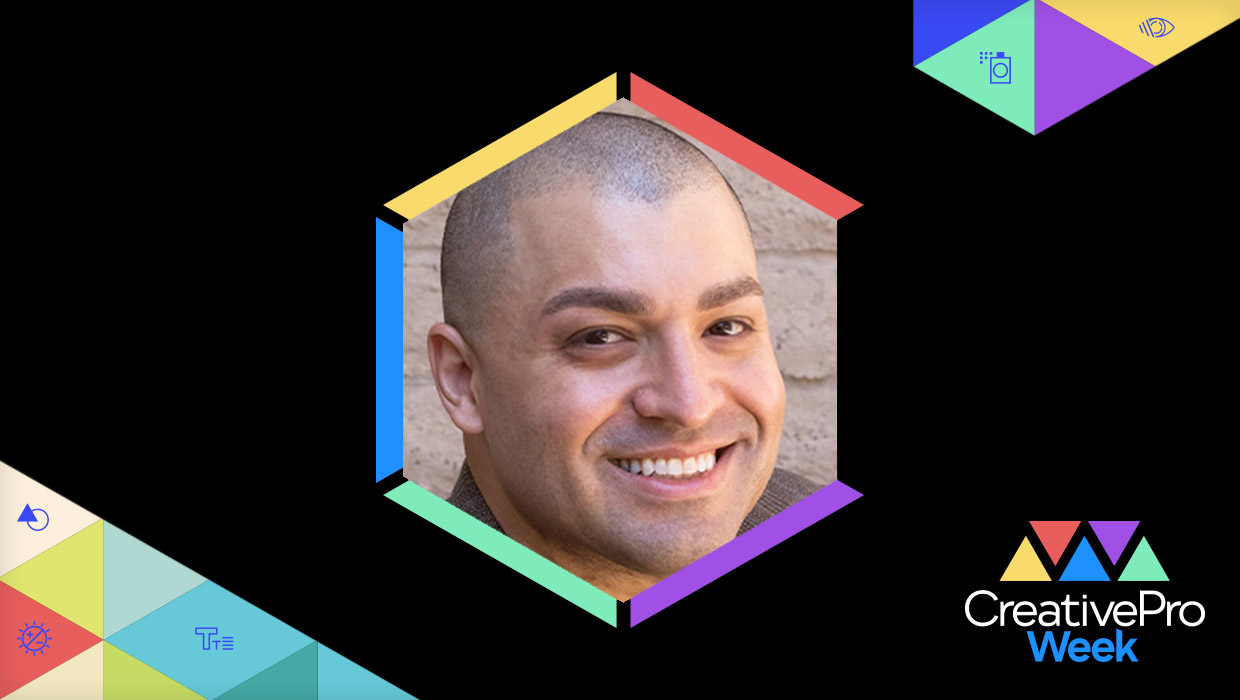Interview with Prescott Perez-Fox, Brand Builder
Q&A with Prescott Perez-Fox, who is presenting at the CreativePro Week 2025


Prescott Perez-Fox is a creative director, designer, brand strategist, and speaker based in Phoenix, AZ. He’s also speaking at CreativePro Week 2025, which takes place June 2-6 in Phoenix, with sessions on Figma for designers and InDesign.
We thought it would be fun to get to know him better with some Q&A.
What’s the biggest mistake designers often make when using InDesign?
By far, it’s failing to use big, contiguous sections of type. Ideally, every page has a single text box and everything is styled within both for structure and appearance. But that’s not how any other application works. So when designers first come to InDesign from Illustrator, Powerpoint, or anything else, they often have the instinct to create “confetti type” where each piece of text is it’s own tiny frame. When printed, it looks fine, but it’s an absolute beast to work with or update later.
Do you have a favorite feature that you wouldn’t want to live without?
There are few things for me that are life saving, even if, technically, I could find another way to accomplish the same thing. Changing column splits/spans is amazing, and saves us from having to use multiple threaded text frames. I’m also grateful every day for paragraph shading, which adds a boatload of options for styles, without having to use nested objects or other workarounds. That took way too long to arrive … and where is the corresponding character shading?!
Best suggestion or tip for anyone new to InDesign?
Because InDesign is 25 years old, there are plenty of tutorials and videos out there! Do some searching and look for Michael Murphy’s old podcast “The InDesigner” which has some amazing walkthroughs. Since they rarely remove features from the app, those skills are still relevant.
I’d also recommend people close every panel they aren’t using. Start with Tools, Layers, Pages, and Control only. Follow your instincts from Illustrator and Photoshop, and then as you discover new functions, bring in those panels. Otherwise, it may be overwhelming from the start (the way I feel when I open After Effects!).
And of course the best way to learn is to work alongside a master practitioner. Opening up someone else’s files and seeing how they operate is a great way to learn. Just make sure the person you follow is a real production nerd, not just the most experienced person on the team. Not all veterans have good habits!
What’s the most unexpected use for InDesign that you’ve seen (or done)?
I always seem to amaze people when I tell them that I do my presentations in InDesign. They have it firmly in their head that “InDesign equals print” but a presentation is just a rectangle, so it’s pretty straightforward. You just have to adjust your thinking when it comes to point size and how much content is comfortable on a page (er, slide) at once. But that’s just design, isn’t it?
In the past, I actually would make social media images in InDesign too, using custom page sizes, which is itself a bit of a hack. Each spread would be the full sweep of social images for the different platforms. That works ok, but gets squirrelly once you have multiple images or messages for the same campaign — you’ll have a file with 100 “pages” before you know it!
What are you most excited to share at CreativePro Week?
As an audience member, I always love seeing those “hidden in plain sight” features, in any app, where you understand the context so you can instantly bring that into your workflow. I hope to give away a few of those, and maybe hear from folks down the road about how they’ve started doing that new thing and never looked back. Small wins add up!
This article was last modified on February 5, 2025
This article was first published on January 24, 2025



